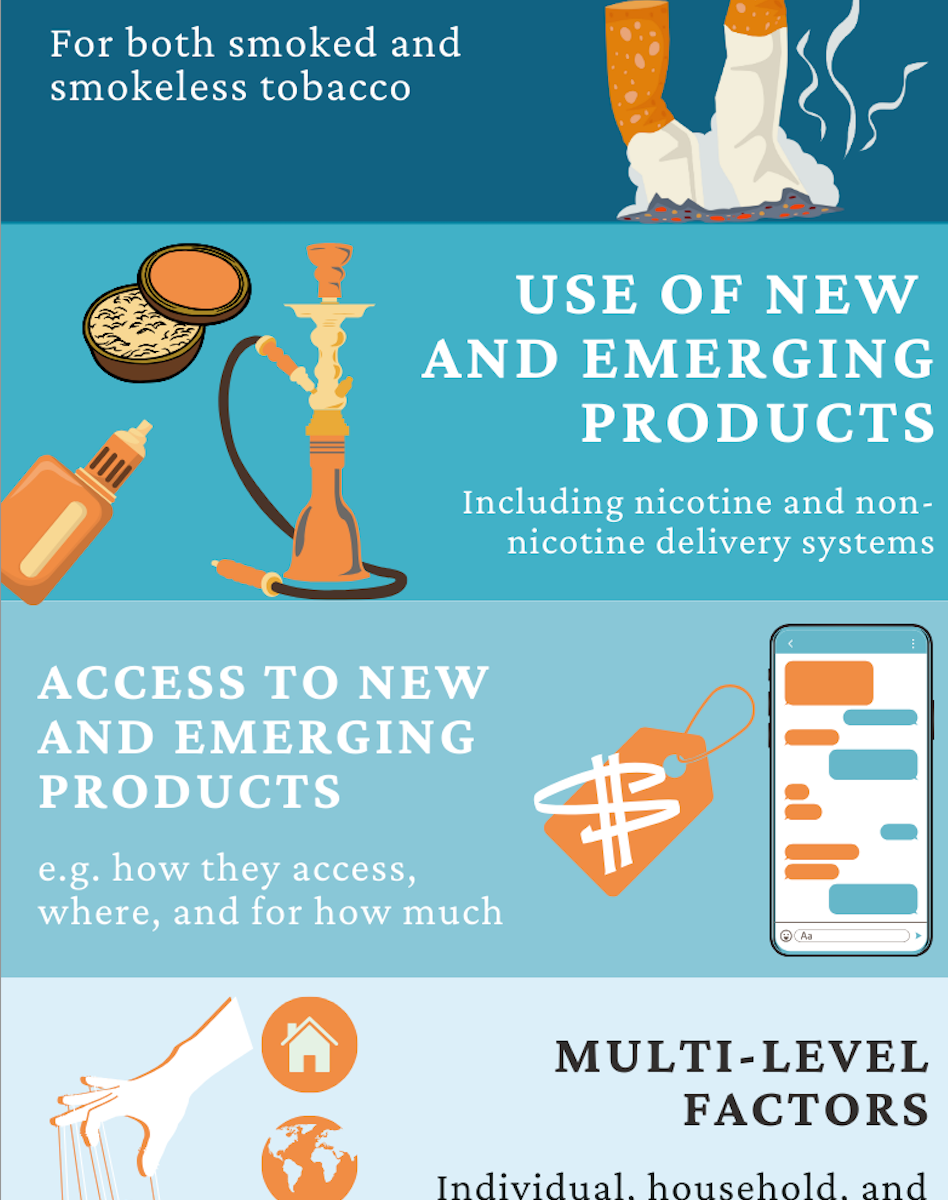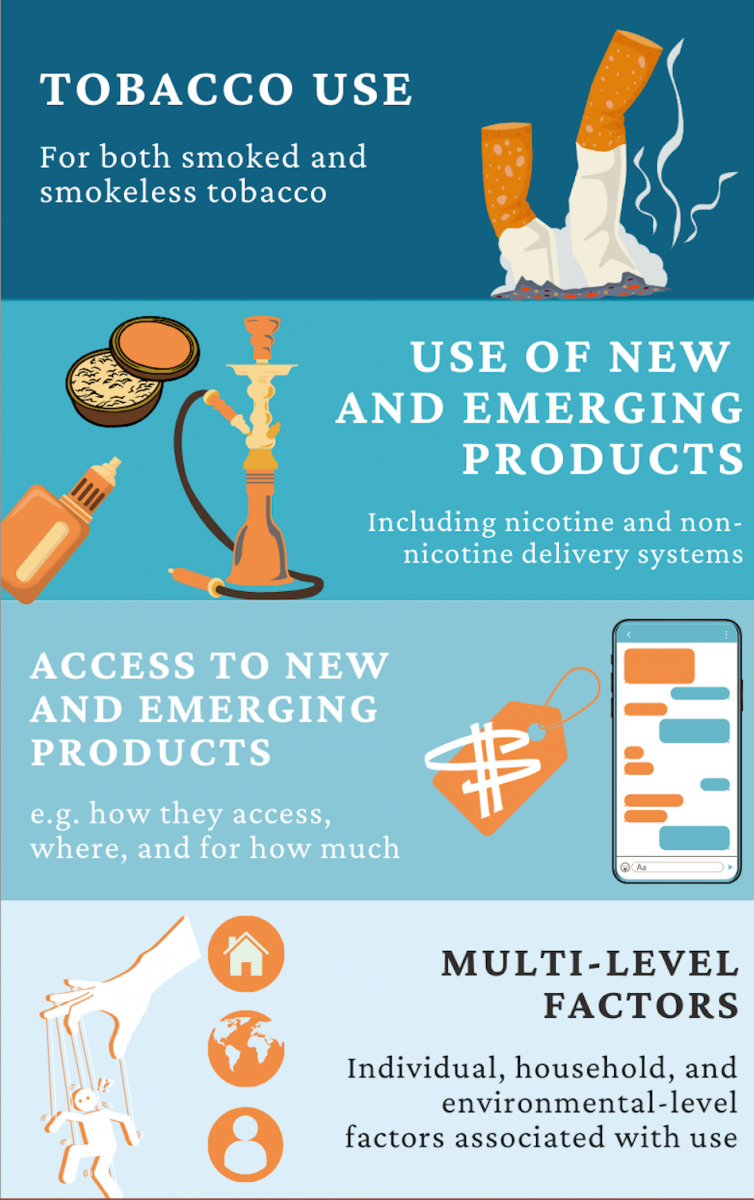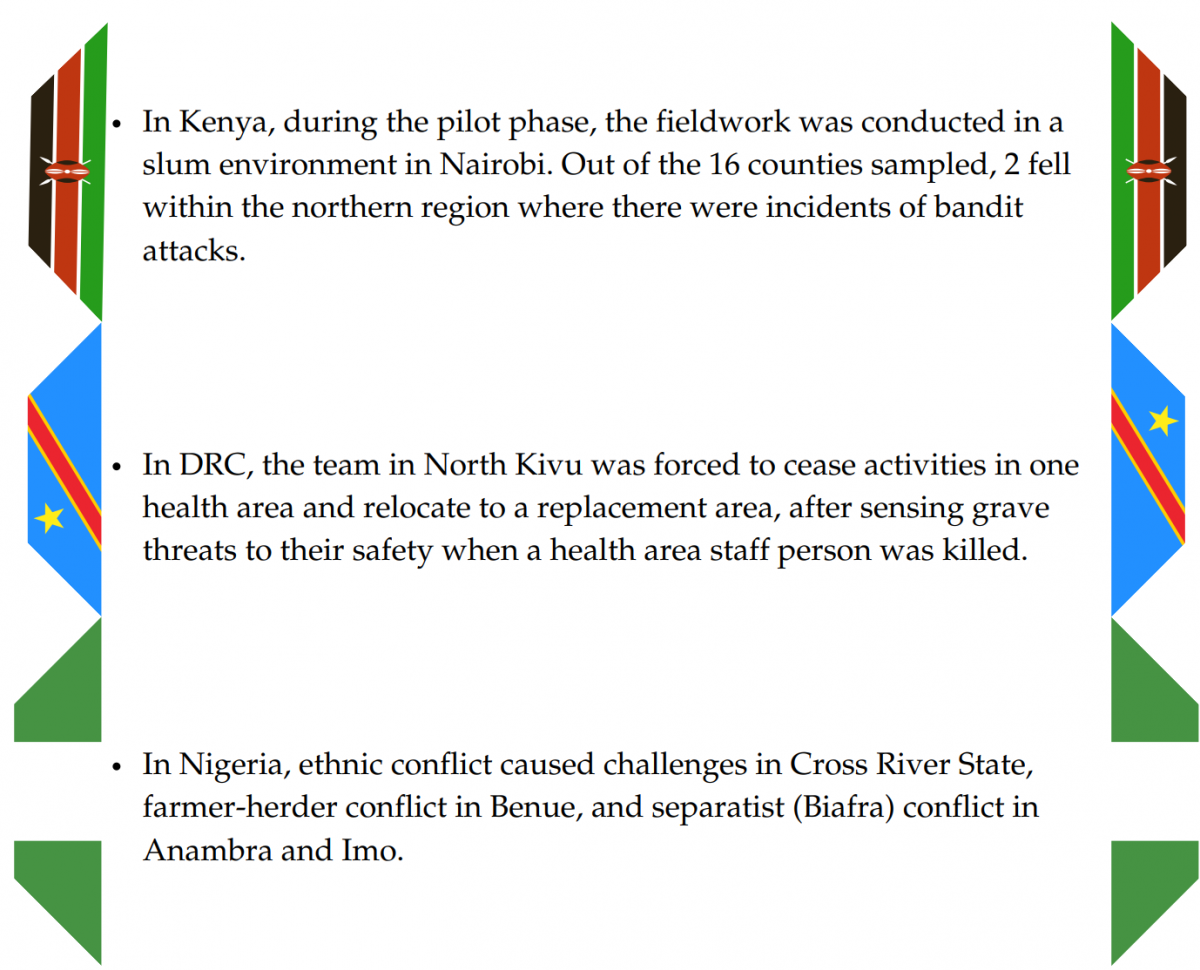
Diving into the DaYTA Program’s Data Collection Process
Development Gateway: An IREX Venture’s DaYTA program seeks to advance tobacco control efforts by gathering data on tobacco use among 10- to 17-year-olds in Kenya, Nigeria, and the Democratic Republic of Congo (DRC). The findings from the DaYTA program will be eventually integrated into the existing country dashboards on the Tobacco Control Data Initiative portal, which can be found at https://tobaccocontroldata.org/en. Having this timely and representative data will ultimately enable policymakers to formulate targeted, data-informed interventions to prevent and/or address the initiation of tobacco use among youth.
This blog will explore key insights from the program, offering practical guidance for researchers on effective data collection, overcoming field challenges, and leveraging local partnerships to enhance tobacco control efforts. This piece is in accompaniment to DaYTA’s workshop convening all 3 study country stakeholders to review the survey results and strategize on how best to disseminate this data to target audiences, in Lagos, Nigeria, from November 18-20th.
Overview of DaYTA’s Data Collection Process
A core milestone of the DaYTA program was primary data collection. Between April and June 2024, data collection was carried out in all three countries of implementation. Using data from the co-design workshop in Naivasha, Kenya, in late October 2023, a central study management and coordination team identified priority topics applicable to all three countries and those tailored to each country’s unique needs. The priority topics identified, constituting the “core” modules to be featured on the respective DaYTA website pages, include:

Challenges Faced & Solutions Deployed
The DaYTA survey’s methodology was more inclusive because it was household-based versus school-based. However, this presented its own challenges–ranging from absent heads of household, parental interference, access issues to wealthy urban areas, and rugged terrain in some enumeration areas (EAs). Field researchers advanced several practical, context-specific solutions to overcome these challenges, laid out below:
Navigating Parental Concerns: As this was primarily fueled by mistrust, field researchers clarified the research objective and purpose with both heads of household and youth participants. In DRC, these discussions helped gain parental approval when enumerators faced resistance in the Sud-Kivu province. Across countries, the use of slang was used to break the ice with youth participants. This worked quite well, as field researchers were relatively young. In some instances, parents insisted on being present during interviews. This was not permitted as the presence of a parent can influence the honesty and openness of the youth’s responses.
In some cases–particularly in the DRC–parents actually encouraged field researchers to speak with their children due to the beneficial educational information. The DG team celebrated this anecdote as there was a lingering concern that communities might perceive field researchers as “outsiders” attempting to “corrupt” their kids, but in reality, parents considered field researchers the source of truth. In Kenya, youth participants felt respected by virtue of being asked for their consent to be interviewed rather than just their parents.
Flexible and Strategic Planning for Door-to-Door Data Collection:: Generally speaking, this approach demanded meticulous scheduling and multiple visits due to out-of-control variables such as school schedules, absence of heads of household, access restrictions to certain areas, and others. In DRC, some provinces were relatively straightforward (i.e., Tshuapa and Kasai), given that households were closely grouped or household schedules proved favorable.
However, DRC field researchers also noted that conducting interviews in rural areas required significant effort, as the heads of household were often absent, necessitating multiple visits throughout the day. In rural areas of Kenya, field researchers adapted to constraints posed by traditional gender norms, dictating that a man cannot interview an adolescent girl. To address the concerns about the gender dynamic, female field researchers interviewed adolescent girls or teamed up with one male and one female enumerator visiting an enumeration area (EA) together.
In Kenya and the DRC, field researchers encountered issues accessing households in wealthier urban neighborhoods that were gated communities. To mitigate this, the Kenya data collection firm tried to obtain permits from residential associations to gain access. However, this was unsuccessful. Instead, those areas were omitted and the enumerators moved to other EAs.
While the root of the security concern differs by country, all three DaYTA countries experienced some form of security issue—from localized to widespread:

The following country-specific provisions were made to ensure the team’s safety:
- In Kenya, a security detail was provided for field researchers in Nairobi slums during pre-testing;
- In the DRC, staff members were quickly evacuated from areas of concern; and
- In Nigeria, field activities were postponed until after Biafra day.
Standardizing best practices while tailoring to the local context: Field researchers operated in diverse settings necessitating variable modes of communication, approaches, etc., impacted by the prevailing sociocultural context. In Kenya, field researchers were required to speak the two national languages–Swahili and English–but if the head of household didn’t speak either, they would switch to the local language. Proper planning ensured that field researchers sent to specific areas came from that particular tribe. This also added the benefit of building rapport and trust with the youth and parents.
The DaYTA Comparative Advantage
The DaYTA research distinguishes itself from other global youth tobacco surveys in a multitude of critical ways:
- It was nationally representative: During DaYTA’s rapid assessment conducted in the fall of 2023, one stakeholder explained that the lack of nationally representative data required them to review data collected in neighboring countries to better understand the trends throughout regions outside of the major urban areas. Due to the vast size of the DRC and its history of security challenges, DG initially planned to survey select provinces. Fortunately, we selected a data collection firm with extensive experience implementing research in rural DRC and delivered a nationally representative survey, with a record 16 provinces being completed.
In Kenya, DG partnered with the Kenya Bureau of National Statistics (KNBS), and in Nigeria, DG partnered with the National Population Commission (NPC). These partners’ expertise and official data on enumeration areas provided a scientifically and nationally recognized sampling frame that will assist with the validity and credibility of DG’s findings. Further, the partners’ access to accurate and up-to-date data helped facilitate the government’s buy-in and ownership of the DaYTA research. In Nigeria, when security issues arose in specific data collection areas, the NPC’s proactive response was a testament to its commitment to the success of the DaYTA project. It quickly re-randomized and provided new enumeration areas. This flexibility helped maintain the integrity and continuity of DG’s survey, allowing the team to avoid delays and ensure the safety of field teams.
- The high level of compatibility between DG and the local partners made all the difference: This demonstrated DG’s commitment to leveraging the power of local human resources and respecting national institutions by subcontracting to country-based firms and having them recruit locally. This proved vital for fostering trust and collaboration with government stakeholders. It serves as a crucial reminder to think carefully when selecting your research partners and consider if they are present (in some capacity) in a wide range of geographic areas.
- The sampled age group was comprehensive: Many global youth tobacco surveys are limited to in-school youth and cover a narrower age range. With this in mind, we sampled 10-17-year-olds and decided to go with a household-based survey to ensure that both in-school and out-of-school adolescents were reached, whether emancipated or not. Targeting this demographic was especially critical in light of recent data from the UNESCO Institute of Statistics indicating that nearly 60% of youth between the ages of 15-17 are out-of-school.
- It covered the use of new and emerging products: Due to the outdated nature of the most recent Global Youth Tobacco Survey (GYTS) reports in each DaYTA country, emerging products were not included, except in Kenya. These products are gaining popularity worldwide, especially among youth and adolescents. Evidence shows a strong association between the use of these products and being an ever-smoker or having recently smoked combustible cigarettes. However, data on these products is only routinely collected in some countries; it is optional for countries to collect this data in the GYTS.
Looking Ahead…
DaYTA’s workshop is convening stakeholders from all three program countries, spanning members of academia, civil society organizations, and government. On top of gaining a more in-depth understanding of the survey results, the meeting also aims to support stakeholders in:
- Formulating creative and interdisciplinary strategies for engaging youth in tobacco control advocacy,
- Considering challenges and mitigation measures gleaned from DaYTA’s research design and methods for due consideration in potential future studies, and
- mapping work plans and key performance indicators for Year 3 of the program.